Eight weeks of archaeological digs have revealed unexpectedly contrasting architectures. At Cerro do Oiro, an enormous Neolithic tomb-temple was found, unparalleled so far in the Portuguese south. The small tomb of Buço Preto, in Esgravatadouro, was one of the first to be built in the Serra de Monchique at this time.
This Friday, August 13, when I started the car's engine, around 13:00 hours, the thermometer indicated 42º C. In the Esgravatadouro, I thought, it wouldn't be surprising.
This place in the Serra de Monchique forms a half-slope terrace, with a breathtaking view over the sea, but it is very sunny. It was, in fact, due to this location that, six thousand years ago, Neolithic communities decided to build the last dwellings of their loved ones here: small tombs erected with slabs placed vertically, forming a kind of sarcophagus, and then covered with an artificial hill of earth and stones, to protect them for eternity. We call them cists.
Its scientific interest is great, it goes back a long way, and that is why, today, at the end of the excavations, it was decided to open the works to the public. The “Open Day”, so called because whoever wanted to travel here would be accompanied by one of us on a personalized guided tour.
So, at that moment, I couldn't help but smile to myself: this Friday the 13th was not unlucky. Despite the 42º C at that hour, we had the pleasure of receiving a dozen people. Some live nearby, others came from further afield, others were still on vacation at the beach, but decided to climb the mountain to see the excavations.
I think our visitors liked what they saw and liked our explanations. Ana and Nuno, a couple from Lisbon on vacation in Lagos, were surprised by the story that this small tomb contains. They said that it was necessary to widely disseminate the stories that the set of tombs in the surroundings of Caldas have to tell. Which are unexpected stories, because, for a layman, a “heap of stones” seems to be no more than that. It would be interesting to have an explanatory and illustrated panel along the way. That putting a QR Code on it would lead the visitor to know these stories would be a practical solution and today it is very common.
Well, I tried to explain that we are still at the beginning. Before reaching the full disclosure of this heritage, it is necessary to gather scientific information — that is, recover the fragments of history that these tombs contain —, process it, then design a communication strategy, and only then, finally, bring it to the general public, to visitors to Monchique, and especially to Monchiquenses, direct heirs of this heritage.
A brief note: Ana and Nuno are not fictitious names; are real people, those who give us the most important Feedback to check if we are on the right path. In the case of these works of ours, I want to think that we are.
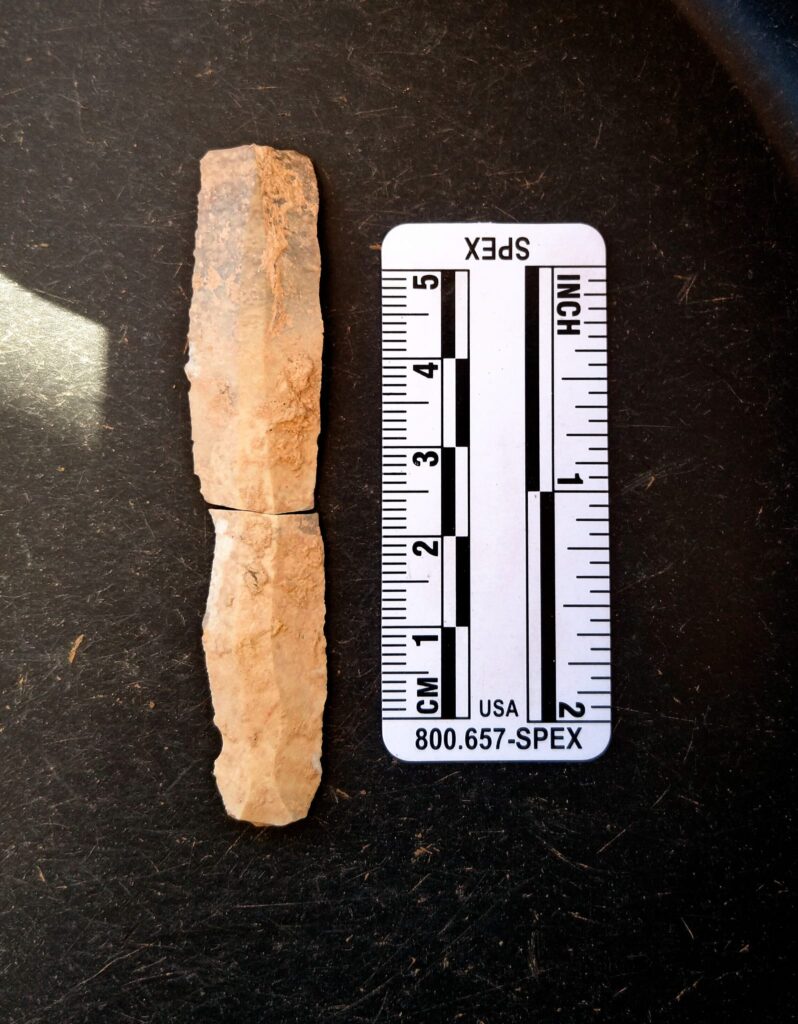
Indeed, all this effort that we have undertaken is the result of a commendable initiative of the Municipality of Monchique, which has been made public in the pages of Sul Informação since last May.
The basic idea with which we started is quickly explained. The municipality provides the logistical means that are within their reach: accommodation for the team, transport, contracting of flights from drone and topographic surveys…
A protocol with the University of Algarve puts a multidisciplinary team on the ground and also allows in practice — because it is not foreseen in these terms — to informally create a “camp-school”, where students from different degrees of higher education in Archeology come to practice fieldwork . We can thus count on volunteers from several Portuguese universities, from Spain and Sweden.
The success of this “school-field” was seen in the expressed desire of some to return, which actually happened: students who made an effort to “repeat”, but in this case the experience of digging with us; so, after their shift ended, there were those who returned to Monchique once more and wanted to return.
The dynamism surrounding this project, previously approved by the General Directorate of Cultural Heritage, of the Ministry of Culture, aroused the curiosity and interest of the Archaeological Association of Algarve, who joined our effort, generously supporting the municipality and, in this way, the project — in fact, following many other initiatives that we know of this association, and which it is fair to recognize publicly.
Likewise, we also have the collaboration of the University of Gothenburg, Sweden, where an international research project is currently taking place on these prehistoric tomb manifestations on a European scale, and for that reason, moreover, financed by the European Union.
The University of Algarve is your Portuguese partner, and this partnership will provide us with access to laboratory studies on Monchique heritage. That's why the person in charge, Professor Bettina Schulz-Paulsson, was with us these last few days and two of her students participated in the excavations for a month.
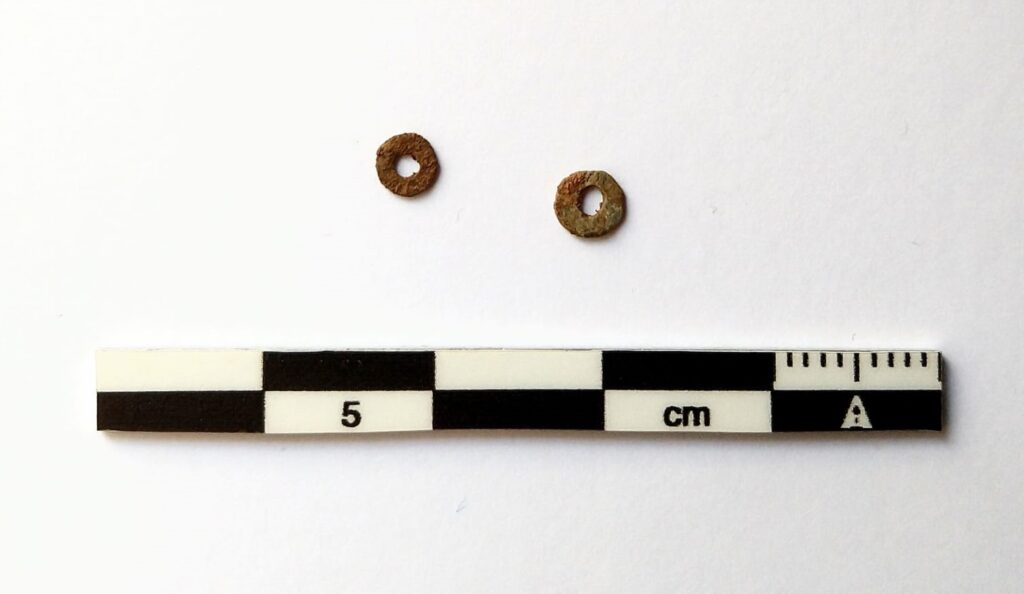
But, after all, what are these archaeological sites that justify all this activity?
First of all, they constitute an authentic constellation of tombs architecturally similar to those of the Esgravatadouro, today inventoried in about three and a half dozen, which are distributed over the flats and hills surrounding Caldas de Monchique.
The discovery of the first of these tombs took place more than eighty years ago, at which point a period of excavation that would last until the mid-1940s began.
New tombs were only discovered after the fires in August 2018, thanks to the dynamism of the municipal archaeologist, Dr. Fábio Capela, who placed himself on the land and managed to relocate them and even discover new ones, which had gone unnoticed.
Between these two moments in time, the prehistoric tombs of Monchique played an important role in the international literature on the origins of megalithism, a neolithic cultural phenomenon defined by the construction of large stone tombs (hence the term): the dolmens, or tapirs in Portuguese.
The particular interest of our Monchique tombs lies, ironically, in their small dimensions. For example, the tomb that was open to the public in the Esgravatadouro is big enough to hold just one person. And with it, we found very few objects, all of simple manufacture: a small flint knife and a fragment of a trapezoidal arrowhead, also in flint, and two small schist necklace beads.
It is very likely that, with these offerings in stone, perishable goods were placed, which time and the acidity of the soils managed to decompose. Wooden vases, the arrows and bows to which the flint tip belonged, the handle of the knife, pieces of meat that served as food for the deceased's afterlife, flowers or the shroud that might have enveloped him…
Now, for many Portuguese, Spanish and British scholars, the great Dolmenian constructions of Atlantic Europe of six thousand years ago, in some way equivalent to what we would call today family tombs, had their origins here. Or at least the classical dolmens would have had their architectural models here.
The origin of megalithism is not understood in such a linear and simplistic way today, but the fact is that we still do not know exactly the age of these Monchique tombs — we know that they date back to the 40th millennium BC, but we lack elements of greater precision — and there are a series of data that we do not have and of inferences that we have not yet been able to produce because their excavation in the XNUMXs took place without the use of technologies that are at our disposal today. Hence the interest in its re-excavation.
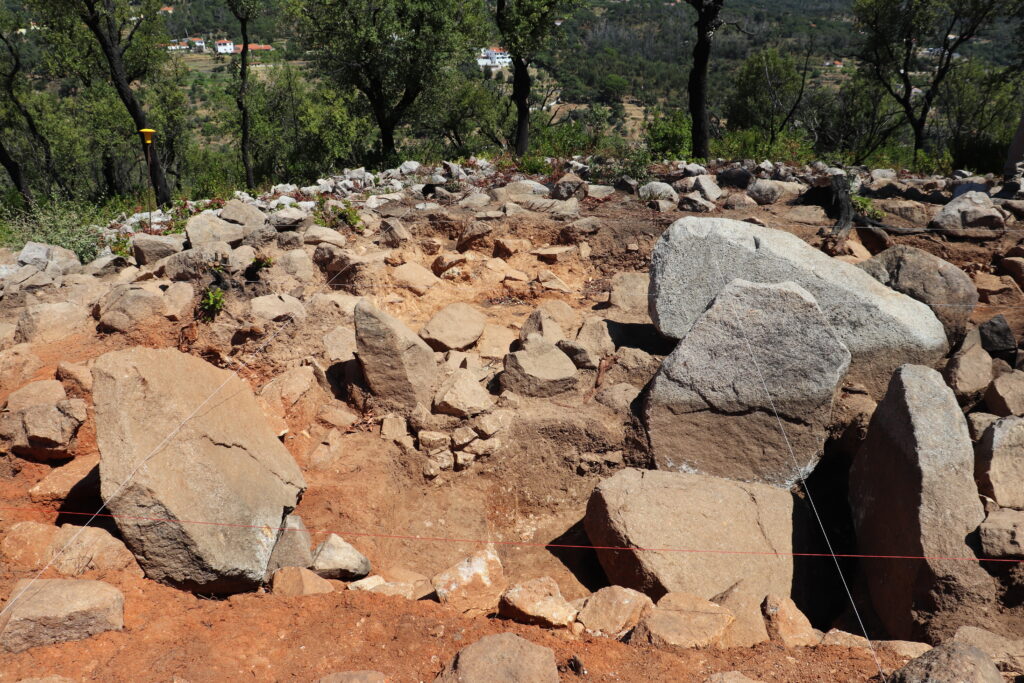
One of the unpublished tombs, discovered three years ago, is the one of the Oiro Hill, at the western end of the extensive prehistoric necropolis. The excavation here took longer because the whole ensemble seemed to reveal a very vast and complex architecture. And so it was, effectively.
The numerous blocks of syenite accumulated on top of this hill were displaced, dispersed, fragmented. The name of the site suggests that there were excavations here in search of the base metal. If you add to that the millenary growth of large trees, the carrying out of agricultural work, the construction of walls to divide the property, we are forced to conclude that everything will have contributed to the superficial stirring of an imposing stone structure of the Pre- Story.
The archaeological excavation, the use of aerial photography and the topographical survey allowed, however, to perceive a wide organized set. The entire top of the hill is artificially structured in various interior spaces, sometimes delimited with stone rings, adjacent to other exteriors, in which celebrations and rituals would have taken place, which today are impossible to recover in their entirety.
The central point of the set is a small cist with a quadrangular plan formed by four slabs vertically surmounted by another horizontally, which closed this sepulchral space with about 1,5 meters on a side. The offerings that we can associate, either to the funerary space, or to those found in spaces reserved for rituals and ceremonies, do not differ much from those of the Esgravatadouro. Arrowheads of various types and stone knives, polished stone axes, schist necklace beads, some tiny fragments of pottery…
A big difference between the Cerro do Oiro and the Esgravatadouro was, however, established from scratch by the Neolithic communities themselves. Unlike Esgravatadouro, on that hill there was an enormous constructive effort.
The construction of all those spaces required labor and a capacity to coordinate collective work that we don't find in small graves. Carrying slabs to the grave and stone blocks uphill, along a steep slope, and carrying hundreds of kilos of clay with the stones to consolidate the entire structure, all of this brings us to a different social and ideological context.
And more: who would be the character, or characters, who would deserve such differentiated treatment in death, which would justify such a joint effort on the part of their community? What character would justify, in addition to the construction of his final home, also the arrangement of adjacent spaces, in a place with an impressive view over the entire coastline, where celebrations and other rituals would have taken place?
These aspects, invisible at the first glance at an archaeological site, are ultimately our ultimate demand as scholars of the Past: the reconstitution of ways of life, daily life, social relations, the look at death, in short, the worldview of societies that preceded us.
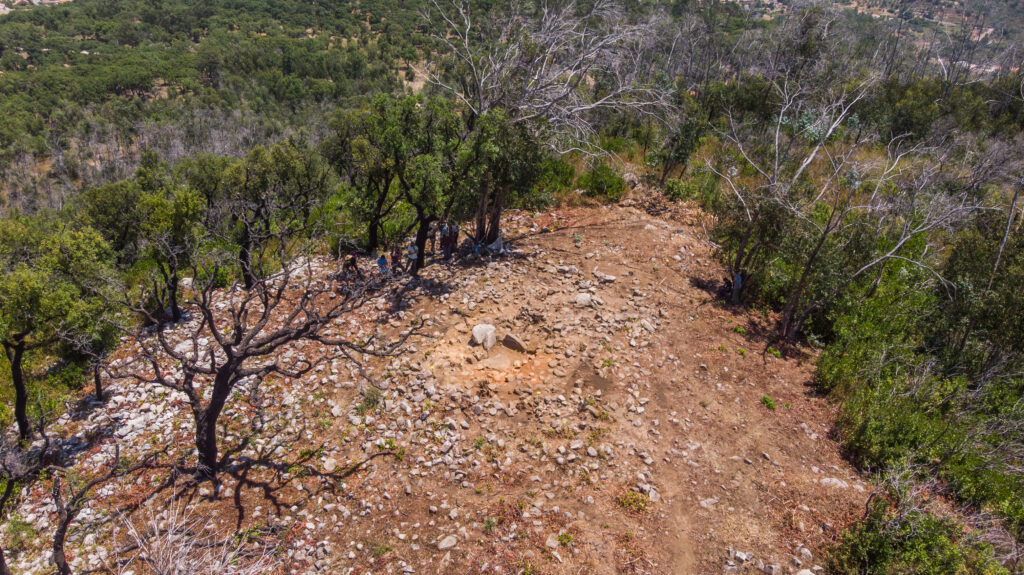
We already know, from other works in Barlavento, that we are dealing with societies of farmers and shepherds, and sometimes also of shellfish gatherers and fishermen.
We know that they built other tombs elsewhere in the Algarve. We deduce that those who worshiped their dead in the Esgravatadouro, Cerro do Oiro and all the other necropolises around Caldas de Monchique, should inhabit the foothills of the mountain, where the soils and the availability of water favored human settlement at that time.
We also deduced that this entire territory where the necropolises are distributed would constitute a vast sacred space, a sanctuary on the slope of the mountain, over the sea but closer to the sky, where somehow their ancestors would live forever. The thermal waters should also not have been indifferent to this choice...
But there is still a lot to be done, in the field and especially in the laboratory. There are many hypotheses to test, but there are also stories to tell about our Monchique ancestors.
These eight weeks of field work have already allowed us to recover a huge volume of data, which will take a couple of years to process completely.
As the person responsible for the entire process, from the preparation of the project to its conclusion, I therefore have the responsibility to bring its results to the attention of the scientific community and the public.
The Municipality of Monchique will have a decisive say in what to do in terms of valuing this very unique heritage of its territory, as well as the bodies responsible for it.
For now, however, the recognition of the effort made in these eight weeks is due to Fabián Cuesta-Gómez, who, within the framework of the project, competently and meticulously directed all the tasks inherent to both excavations, to Fábio Capela, who ensured the necessary support logistics from the municipality, to the two dozen students who voluntarily participated in these works, and, last but not least, to the President of the Municipality, Dr. Rui André, for having promoted the preparation of the research project and monitored, with undisguised personal interest, the results that were being obtained.
It is up to all of us to continue what has just begun and ensure that the wishes expressed by all those who visited us on the Open Day can be fulfilled.
Author António Faustino Carvalho is a professor at the University of Algarve, archaeologist and author of several books and scientific articles on the Neolithic
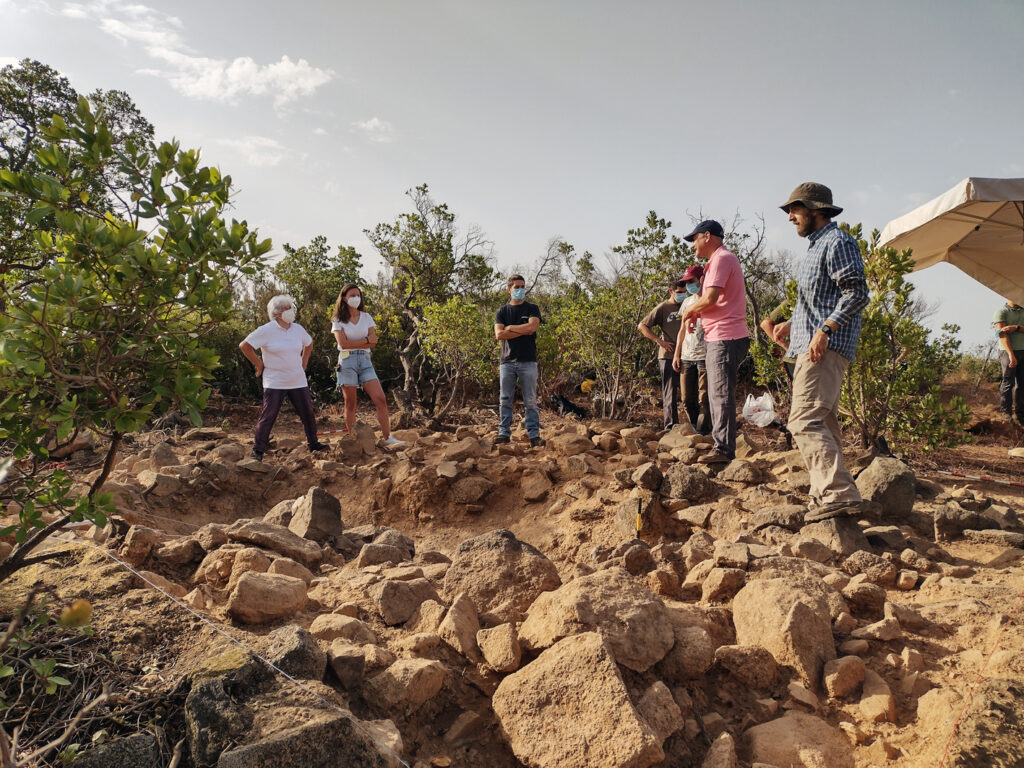


















Comments